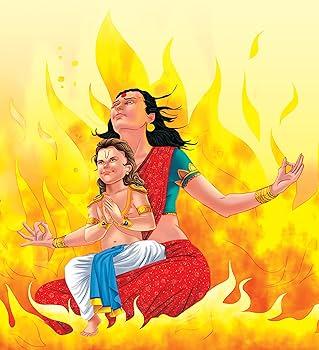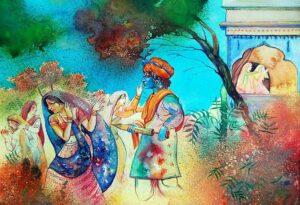History of Holi Celebration
Holi, also known as the Festival of Colors, is a vibrant and joyous Hindu festival celebrated primarily in India and Nepal, but it has gained popularity in many parts of the world. The festival usually falls in March, marking the arrival of spring and the triumph of good over evil.
The history of Holi can be traced back to various mythological stories and legends, with one of the most popular being the tale of Holika and Prahlad. According to Hindu mythology, there was a demon king named Hiranyakashipu who wanted everyone to worship him as a god. However, his own son, Prahlad, was a devotee of Lord Vishnu. Angered by his son’s devotion, Hiranyakashipu attempted to kill Prahlad several times, but each time he was saved by divine intervention.
Finally, Hiranyakashipu enlisted the help of his sister, Holika, who was immune to fire. She sat on a pyre with Prahlad in her lap, intending to burn him alive. But due to his unwavering devotion, Prahlad emerged unharmed while Holika was consumed by the flames. This event symbolizes the victory of good over evil and the burning of Holika is celebrated as Holi.
Another legend associated with Holi is the love story of Lord Krishna and Radha. According to folklore, the mischievous young Krishna, who had a dark complexion, complained to his mother about Radha’s fair skin. His mother, Yashoda, playfully suggested that he could apply color on Radha’s face to change her complexion. Inspired by this, Krishna and his friends would playfully throw colored powders and water at Radha and the other gopis (milkmaids) during the spring season, thus initiating the tradition of playing with colors during Holi.
Over time, Holi has evolved into a community celebration filled with music, dance, and the throwing of vibrant colored powders known as “gulal.” People come together to forget past grievances, forgive each other, and renew relationships. It’s a time when social barriers are broken down, and people of all backgrounds come together to celebrate the spirit of unity and love.
In addition to the colorful celebrations, special foods and sweets are prepared, bonfires are lit to commemorate the burning of Holika, and traditional rituals are performed in temples and homes. Holi is not only a time of joy and merriment but also a celebration of the rich cultural heritage and diversity of India.
Holi Traditions:
Holi is celebrated over two days, with the first day marked by the lighting of bonfires on the eve of the festival, known as Holika Dahan. People gather around the bonfires, perform rituals, and offer prayers to commemorate the victory of good over evil.
The second day of Holi is known as Rangwali Holi, during which people gather in public spaces and streets to engage in the playful throwing of colored powders and water. It is a time for socializing, dancing, singing, and enjoying festive foods and drinks. Traditional sweets like gujiya and thandai are prepared and shared among friends and family.
In addition to the colorful revelry, Holi also involves other traditions such as playing with water guns and water balloons, singing folk songs, and exchanging greetings and blessings.




